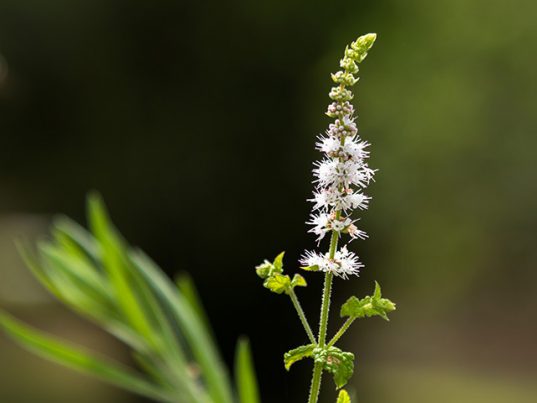
Black Cohosh – sources, health benefits, nutrients, uses and constituents at NaturalPedia.com
Friday, August 18, 2017 by Frances Bloomfield
http://www.naturalpedia.com/black-cohosh-sources-health-benefits-nutrients-uses-and-constituents-at-naturalpedia-com.html

The black cohosh (Actaea racemosa), also known as black snakeroot, is a perennial flowering plant native to North America, mainly the eastern United States and Canada. Apart from being responsible for its more common name, the black roots of this plant have rich history of medicinal use by Native American tribes, and subsequent early American colonists. Black cohosh has served as a natural treatment for everything from kidney issues to snake bites, but it’s most famous application is as an herbal remedy for menstrual cramps and menopause symptoms.

List of known nutrients
The active compounds typically found in black cohosh root include:
- 23-epi-26-deoxyactein
- Actein
- Caffeic Acid
- Calcium
- Cimicifugin
- Fulinolic Acid
- Isoferulic Acid
- Phytoestrogen
- Salicylic Acid
- Tannins
- Vitamin A
- Vitamin B1 (Thiamine)
- Vitamin B2 (Riboflavin)
- Vitamin B3 (Niacin)
- Vitamin C
- Vitamin K
As a result of this combination of nutrients, black cohosh is said to possess mild sedative, anti-inflammatory, diaphoretic, anti-fungal, analgesic, and antibacterial properties.
Medicinal uses for black cohosh
Even today, herbal medicine practitioners utilize black cohosh for such ailments as:
- Anxiety
- Arthritis
- Asthma
- Chronic Pain
- Coughs
- Depression
- Gingivitis
- High Blood Pressure
- High Cholesterol
- Hot Flashes
- Labor Pain
- Menstrual Cramps
- Menstrual Disorders
- Menstrual Pain
- Morning Sickness
- Muscle Cramps
- Nervousness
- Neuralgia
- Premenstrual Syndrome
- Poisonous Bites
- Sinusitis
- Vertigo
As was previously mentioned, the most famous use of black cohosh is for menstrual cramps and symptoms of menopause. Black cohosh can act as a natural hormone replacement and increase low estrogen levels, most likely due to the presence of phytoestrogen. Black cohosh is also believed to help the muscle relax, easing the tension associated with menstrual cramps. Moreover, black cohosh can stimulate menstrual flow to decrease the risk of irregular menstruation.
In addition to menstrual cramps, black cohosh can provide relief from the spasmodic pain of muscle strain and nerve tension thanks to its natural analgesic properties.
Black cohosh has anti-inflammatory effects that can reduce the inflammation and joint pain of arthritis.
Body systems supported by black cohosh
Black cohosh can nourish and support many of the body’s systems, such as:
- Digestive system, including stomach and large intestine
- Liver
- Nervous System
- Respiratory system, including lungs
- Spleen
By increasing regular bowel movement and boosting the function of nutrient absorption, black cohosh can keep the digestive system healthy.
Ways to use black cohosh
A common way to consume black cohosh is as a tea. To make black cohosh tea, simply boil one tablespoon of dried black cohosh root in a cup of water and allow it to steep for three minutes. This tea can be sweetened with honey. Two to three cups a day for a few months will do.
Black cohosh can be purchased in capsule and liquid extract form as well.
Note: although healthy, black cohosh can have numerous side effects when taken over prolonged periods of time. These include headaches, nausea, vaginal bleeding, and drops in blood pressure.
Where to learn more
- 5 Herbs and Mineral to Balance the Hormones
- Black Cohosh Herb Halts Growth of Breast Cancer Tumors
- Black Cohosh Shown to Relieve Symptoms of Menopause
- Black cohosh safe for your liver, review finds
- Top 5 Herbs to Relax Your Muscles
Summary
Black cohosh can ease the symptoms of menstrual cramps, menopause, arthritis, and spasmodic pains. In addition, black cohosh can help strengthen the digestive system. However, too much black cohosh over a long period of time can have detrimental health effects.
Sources include:
HealthLine.com
Indigo-Herbs.co.uk
HerbWisdom.com
DoctorsHealthPress.com
TheRightTea.com
Tagged Under: Tags: Black cohosh





